
There’s a lot of charm to garbage gaming. Try to suffer through a few levels of the hastily named-and-dumped Super Mario 15, in which Mario has an afro but the game is otherwise identical to the classic we know and love, and you’ll never look at bad gaming the same way. It’s an experience that begs to be had, if only to remind you how good we have it.
Today, there are hundreds of similar and bizarre self-contained micro-consoles chock full of that kind of shovelware to explore, and I write about a lot of them, but before these little boxes of delightful trash began taking over eBay, there was the “TV game”, or as most people know them, the Plug ‘n’ Play : small consoles, usually completely contained with in a single controller, which included four or five simple games. Pop in some batteries, plug it into the A/V ports in your TV, and you’re set. Rarely costing more than $20, plug ‘n’ play games filled a lot of empty voids that were developing in the gaming world in the early 200os. They were inexpensive, often contained vintage games that were slowly regaining popularity, and they were portable. Play them in your dorm room without taking up much space, or on your fancy car TV on long drives to the shore. They were also simple and accessible; when your little cousin wanted to play video games, but you didn’t feel like having your expensive PS2 controller caked with kid ooze, there were plenty of plug ‘n’ plays available. Roughly 75% of all plug ‘n’ play games were purchased just to keep more expensive gaming systems safe from school-aged grease goblins, and that’s a fact I just made up.
For these mini-systems, easily ported classic games were pretty regular, but as they evolved, a lot of original and interesting content was developed that became exclusive to these systems. And unlike most simple games, preserving them isn’t as easy as dumping the ROM somewhere. It was barely possible for almost two decades, but the talented brains over at Dave Haywood’s page are making a lot of progress. This coincides with a pretty interesting phenomenon too; “lost media” from the early 2000s has become really popular, and that’s a product of at least two things: a lot of media produced in the early 2000s was ephemeral and a product of a throwaway culture that was just learning how to use the Internet, and people who were growing up during that era are remembering formative moments that are tied to media and becoming nostalgic now that we’re all become old and decrepit. Browse the Lost Media Wiki and you’ll see that a disproportionate number of pages are associated with that era.
They also represent a very brief snapshot in time, from about 2005 to the early 2010s, so you’ll find systems that came out at the height of the popularity of Spongebob, and the Justice League Unlimited animated series. After this period, there was just no reason to make these anymore, and the media was abandoned. And let’s be honest, they weren’t great to begin with, but those little pockets of specific, licensed games that only lurk around the corners of legitimate gaming are inherently interesting. There’s a great appeal to little joysticks that are shaped like Spongebob, or a batarang, or a pirate treasure chest. Not only are these games weird, but the controllers are exceptionally strange, and that’s great.
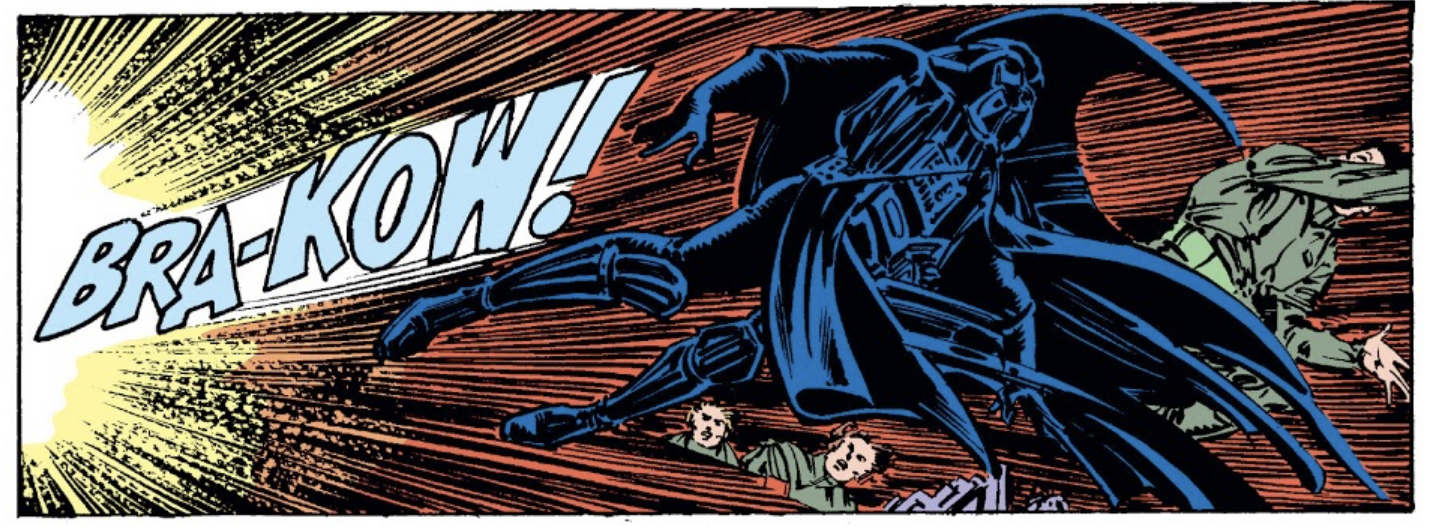
There are about one million video games based on Star Wars, and some are better than others. Obviously, the best is the Battlefront series, and the worst is Star Wars : Jedi Arena for the Atari, where you wave your red or blue wiener at Luke’s training droid until someone waves better than the other person and the game is over. You’d kind of expect that some plug ‘n’ play junk would scrape the bottom of the Star Wars barrel, but it’s pretty cool how legit, and often challenging, a lot of these games are.
The ‘Original Trilogy’ model is a sculpted replica of the Millennium Falcon with a joystick projecting from the top, which itself is a pretty cool concept that combines for with function very well. The controls are familiar to anyone who’s ever played Atari or at an arcade; a joystick and two buttons control all of the action. You have a choice of four games, and they’re all very different. See the video below for a blind playthrough of all four modes where I stumble through things very awkwardly.
‘Lightsaber Duel’ is a standard (but very stuff) face-to-face fighting game, a la Street Fighter II, and by far the most difficult mode. Using a complicated series of moves, dodges, and button presses to enact certain key moves, you battle your opponent as blurry versions of Luke, Obi-Wan, Vader, or Emperor Palpatine, but without any really clear explanation of what action is causing what reaction, it’s a bit of a button-masher… even though button mashing will really get you nowhere. The intro screen attempts to explain a few of these basic moves, but the rest are locked away in the secrets of the manual, which you probably won’t have if you picked this up in a shady Facebook Marketplace transaction outside a Walgreens, like I did. A request sent to Jakks for a manual has not been answered, so this mode is really only for those who want a pretty obtuse challenge. It may literally be impossible to make it through all four battles in this mode without the unknown secret moves.
‘Red Leader’ is a challenging Galaga-type space shooter, with slow bullets and fast enemies, where it’s actually kinda hard to get your lasers to line up with your enemies, simply because your projectiles are so goddamned slow, but if you can visualize where two trains leaving separate stations at different angles will meet in the middle, you can make a shot. It’s not all in space, but eventually cruising over the surface of a Star Destroyer in level 2, which includes firing turrets and physical obstacles, so the game actually shows some smart progression, if you’re into arcade-style shooters.
‘Assault on Hoth’ is a tower defense style game, not unlike Plants vs. Zombies in a way, and it might be the most fun game of the four. You rapidly shift between three DF.9 cannons and hold off rows of Stormtroopers, AT-STs and AT-ATs, using both lasers and a shield you have to hold up just as the enemies’ lasers strike. It’s a lot of careful timing, made a bit strange by the diagonal angle of the game, which makes the bottom track significantly shorter than the top track. The Rebels must be shortstaffed because there should really be someone in each of those towers. A crashed, smoldering Snowspeeder on the battlefield is just one great detail that kinda puts this right over the top.
‘Battle of Endor’ is two types of games in one, and has three levels. The first and third are sidescrolling shooters, like R-Type. In the first, you control a jumpspeeder as Leia and blast Stormtroopers and smash them into trees, which is a really cool alternate way of dispatching your enemies that’s a lot more than one might expect from this game. In the third level, you control the Millennium Falcon, finally, as you race into and out of the Death Star II, avoiding obstacles and other ships along the way. In the second level, you play as Chewie in an AT-ST in an auto-scroller where you only control a targeting reticle and have to awkwardly manipulate it to fire on Stromtroopers and other AT-STs as they barrage you with damage. The controller doesn’t really give you enough precision to do this super well, but the level is a bit forgiving.
Can you beat all of these games in an afternoon with some practice and skill? Probably! It’s more about the novelty of some obscure Star Wars-themed games, and keeping younger kids happy, though these games definitely aren’t very easy. But a Millennium Falcon that you can plug into your TV and play? It’s a great concept.
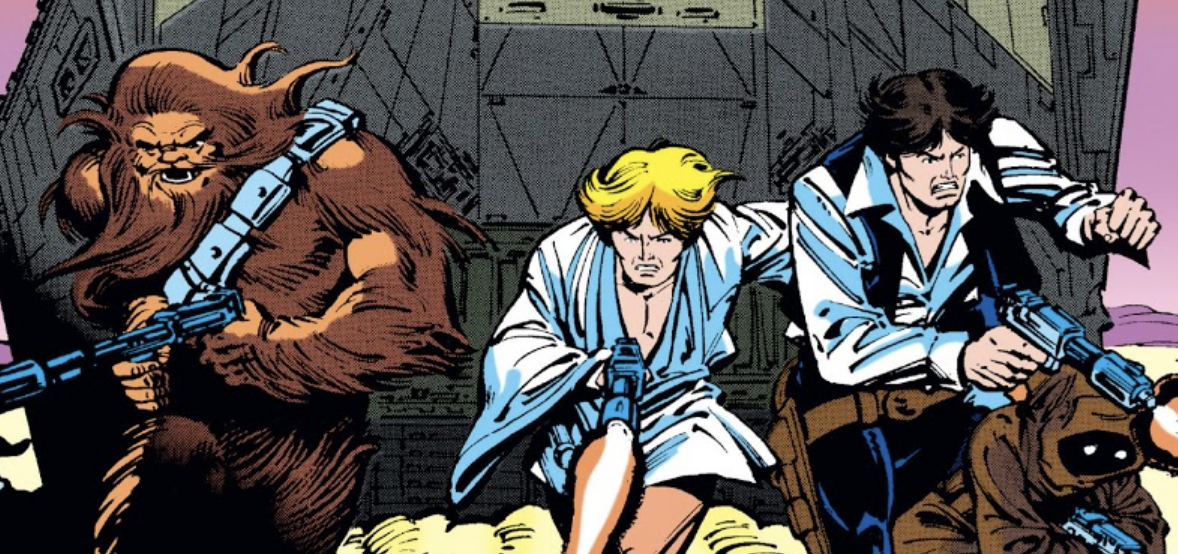
A bit later on, TV Games started incorporating motion controls, in an effort to keep up with what was happening with the Wii, and started producing both gun-shaped controllers for shooting games, and steering wheel-type games for even more control. The Star Wars version of this is the terribly-named Star Wars : Clone Wars Republic Squadron, based on the Clone Wars animated series. Not only does the steering wheel control left and right motion when turned, but it has full gyroscopic controls; tilting it forwards and back are necessary to target, land, and use certain abilities. Add four triggers, and some pretty precise controls, and you have a strangely solid control scheme for a series of shooters on rails. And there are definitely worse shooters on rails than this. Check out this video for a blind playthrough.
There are five campaigns that you run in a 3D-type shooter on rails, like a really bad Starfox, each with multiple missions that unlock as you go. For some, you have to specifically target incoming ships as they approach your screen, in a style that’s at least as good as anything you’d find on a PS1 or PS2. Some ships won’t hurt you, but they give you points if you shoot them. Other ships WILL hurt you, and you need to prioritize shooting them down first. There are also ground targets that need to be fired on using alternate triggers. And there are other levels where you just have to keep on hitting the triggers as fast as you can while everything seems to auto-target, and eventually, you’ll hit a campaign where no matter how fast your human fingers hit those triggers, it won’t be fast enough to take down the enemy ships, and your game will end. Your wrists will hurt, and you’ll remember that half of this game is about flying between powerful banking planets, and you’ll wonder what the point was. It’s just a wall that seems insurmountable, and while the game is full of instructional screens, nothing seems to reveal how to get past the hurdle of having weak human hands.
Then, there are a handful of Star Wars TV games that try to trick you. They may look different, but the ‘Classic Battles’ series all have the same games, and are all based on Episode III : Revenge of the Sith. These are the controller models that feature R2D2, Darth Vader, Yoda, and General Grievous, so if you’re looking for these just for the games, only buy one. The Darth Vader model seems to be the most common, but the basic model lacks a critical Gamekey port if you want the full experience. You can hunt down the Gamekey cartridge that adds two extra games for pretty cheap, but they’re a little hard to find, and they only slot into the other three controllers. It’s a bit tricky to figure out how it all comes together, especially with multiple versions of many TV Games controllers, some with Gamekey ports that have no actual Gamekey, and some with Gamekey ports that are sculpted on, but don’t actually open.
These ‘Classic Battles’ have 5 modes; 7 if you count the Gamekey. ‘Droid Invasion’ combines the aforementioned turret defense-styled game with a little bit of Alleyway; as droids march on Obi-Wan, he deflects their lasers back at them, but he can also angle these blasts to hit droids that aren’t directly in the line of fire. It’s actually a pretty cool mechanic when you can master it. ‘Coruscant Attack’ is Bosconian in 8 directions instead of 4, and because Bosconian is one of the best vintage games of all time, it’s a lot of fun to play. ‘Grievous Onslaught’ is SmashTV, but without the great controls necessary to make it happen right. You run through rooms deflecting lasers and lightsabering droids, but the hitboxes are wiggly enough to make it very hard to actually take control of the arena. If the controls were better, this would be outstanding. ‘Gunship Battle’ feels like an indecipherable mess; you’re a small ship that fires lasers and drops bombs, and you have to somehow protect a handful of soldiers as they make their way to another base. You have no great way to defend yourself, and the enemies fire so fast that it’s really hard to make anything happen. ‘Utapau Chase’ has Obi-Wan riding a lizard-like varactyl named Boga, shooting and tail-whipping foes as they pursue him.
Insert the Gamekey and you have two more options. In ‘Turret Defense’, you are a single turret defending the ground against parachuting droids, shooting both the droids as they slowly descend, and the ships that carry them. Friendly ships and troopers also appear on the busy screen, and you can accidentally shoot them down and harm your own chances at survival. ‘Yoda’s Escape’ is a pretty good platformer in which Yoda has to defeat an army of Clone Troopers as he escapes after Order 66. He cam double jump, throw his saber, deflect laser, and generally cause a lot of destruction; some very fast platforming moments are amp up the difficulty significantly, and boss battles are kinda tough as well.
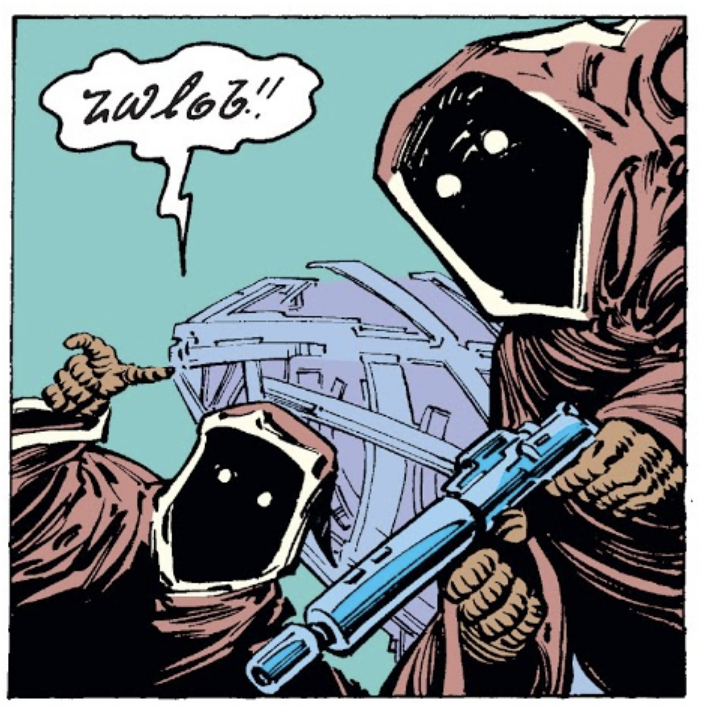
So what does this all mean? Video game ephemera has a way of coming back around. While I wouldn’t suggest investing in these, especially because there are simply so many out there and were in no way hard to obtain, I think that these are on their way back. They fall into a pretty good spot for nostalgia : people who were playing these as kids are having kids of their own, niche gaming things are always popular, and as digital media becomes more and more temperamental and divided, and locked into consoles that may stop working, hard media is making a return. VHS collectors are surfacing, vinyl records are making record sales, and the physicality of media itself is almost a retro concept. And because these games will likely never be replicated elsewhere, they’re kind of a cool rarity. Just wait until the modding or speedrunning community catches on to these things. After all, if you can speedrun a Japanese McDonald’s employee training game, what can’t you speedrun? And there’s almost no reason you wouldn’t be able to put an fully-loaded NES emulator into this shell. Get to it, cool kids.
All comic images are copyright Marvel Comics and presented here for the purposes of criticism & commentary.
 C. David is a writer and artist living in the Hudson Valley, NY. He loves pinball, Wazmo Nariz, Rem Lezar, MODOK, pogs, Ultra Monsters, 80s horror, and is secretly very enthusiastic about everything else not listed here.
C. David is a writer and artist living in the Hudson Valley, NY. He loves pinball, Wazmo Nariz, Rem Lezar, MODOK, pogs, Ultra Monsters, 80s horror, and is secretly very enthusiastic about everything else not listed here.
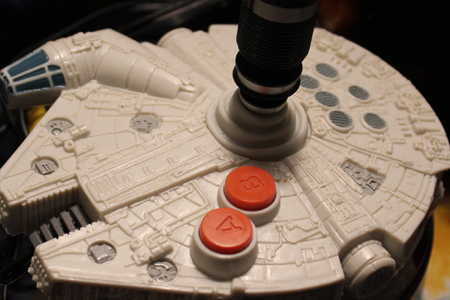

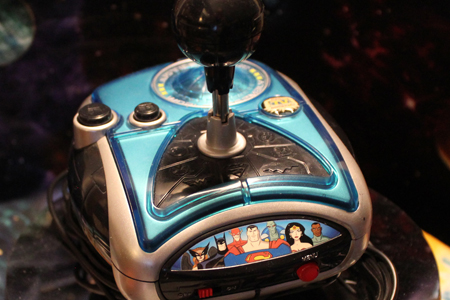
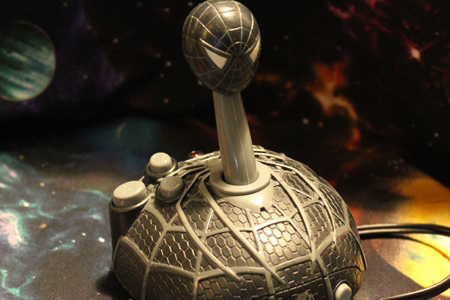
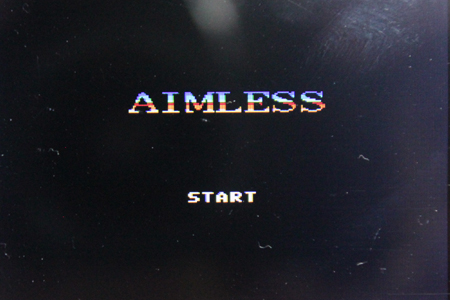
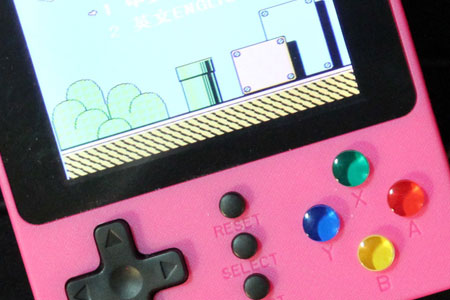

Comments are closed.